| Reviews & Columns |
|
Reviews DVD TV on DVD Blu-ray 4K UHD International DVDs In Theaters Reviews by Studio Video Games Features Collector Series DVDs Easter Egg Database Interviews DVD Talk Radio Feature Articles Columns Anime Talk DVD Savant Horror DVDs The M.O.D. Squad Art House HD Talk Silent DVD
|
DVD Talk Forum |
|
|
| Resources |
|
DVD Price Search Customer Service #'s RCE Info Links |
|
Columns
|
|
|
Only The Young / Tchoupitoulas
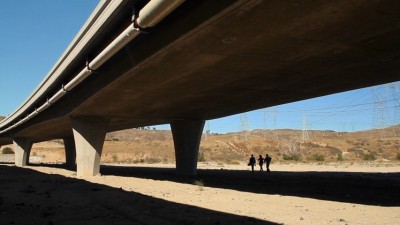
What did Oscilloscope Laboratories, the risk-taking American independent distributor that's already brought us a rich cache of relevant and intrepid documentaries from Exit Through the Gift Shop to If a Tree Falls, do when it found itself with two disparately lyrical and open-hearted nonfiction features about coming of age in very specific American regions and milieux? They sagely and generously made them into a DVD double feature that's more than the sum of its parts, with the films echoing, reinforcing, and enhancing the expansiveness of each other's already mind-opening view of the subjects and themes they have in common. Each of these works has a profound, acute interest in its subject that's matched and balanced out with a commitment to respect and the scrupulous avoidance of condescension or exploitation, making for experiences that are informative, engaging, and honest while at the same time never exoticizing or pathologizing the unique, sometimes troubling real-life tales they have to tell.
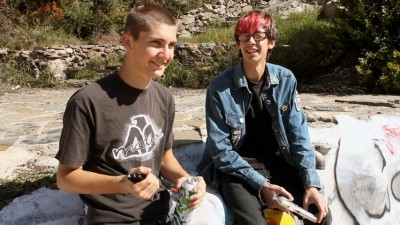
Only the Young, co-directed by Jason Tippet and Elizabeth Mims, has as its redolent backdrop the strangely beautiful, near-haunted Los Angeles-area exurban wasteland of Santa Clarita -- a boomtown suburb experiencing the ravages of the seemingly endless rough economic times, with cracks developing and deepening in its physical infrastructures and social fabric alike -- and nearby "canyon country," a hilly, desert-like landscape that the film's teen subjects optimistically turn to the uses of adventure and exploration. Said high-school kids are the hipster-in-training Garrison and his best friend, the manic and somewhat troubled Kevin, who've long bonded over their kindred-spiritedness and devotion to skateboarding, along with Skye, a tough-minded girl of their acquaintance whose unusually trying life (even for a teenager) has led her near-miraculously not to bitterness but more to a premature wisdom undercut with a self-defensive bluff in her demeanor and a persona hued almost visibly with sad acceptance. The three form a very rough and indeterminate sort-of triangle (Garrison and Skye are a "couple" prone to every fickle vicissitude of pubescent romance in the facebook age; Kevin's affection for and one-time kissing of Skye is a lingering, rare spot of tension in the best friends' otherwise immutable bond), but Tippet and Mims take their subjects' turbulently mutating connections in stride, without diminishing them. Their candidly-shot, interview-heavy approach, amid which the three adolescents clearly feel comfortable and safe being themselves (however hot-headed, irrational, mercurial, or awkward -- one of the kids' favorite adjectives), is restrained with regard to its respectfulness of Garrison, Kevin, and Skye, but also exceedingly open; the goal is not to glue their lives to a contrived narrative thread or get to the bottom of their issues (adolescence, no matter how unwieldy and embarrassing, is accorded the dignity of a wholly inevitable and universal life stage in our culture, not a disease) so much as it is to get to know them, and their families, friends, and communities, all of which ring clear, their complexity and value becoming as clear to us as our own concerns and circles as they adjust to life's twisting path as best they can.
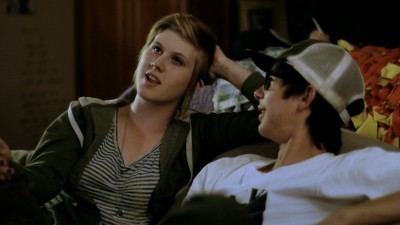
What's perhaps most indelible about the film is how seamlessly and richly Tippet and Mims show Garrison, Skye, and Kevin's existences to feed off of and into the place that constitutes their environment -- the worry-worn, checkered remains of Southern California's onetime paradisiacal sunny-suburbs promise. Their carefully made and selected images from the teens' lives make for an often extraordinarily beautiful and evocative connection of these three fragile lives to the larger picture, how they're blown in the postmillennial socioeconomic breeze; their stories of being forced to move across the country for a decent job (Kevin's family), having a father just out of prison and adoptive grandparents being foreclosed upon (Skye), or finding solace in the well-meaning, dubiously charismatic-evangelical Christianity espoused by the avuncular fundamentalist proprietor of the local skate shop, are intercut bountifully with images of their sun-baked, subdivided, often makeshift or half-abandoned world, a landscape showing the signs of the troubled times in its very face, through which these sweet, brave kids nonetheless skate and stride with a hopeful sense of humor and play (abandoned houses make for tempting hideouts; unguarded, disused residential and leisure spaces make awesome hangouts and skate parks). The film is intermittently deflated by the directors' ill-advisedly giving in to the temptation to superficially romanticize the fraught youth of their subjects with slo-mo manipulations and soul music blaring on the soundtrack (as much as I admire Paranoid Park, its aestheticizing style as it's intermittently borrowed here seems jarringly out of place; Tippet's and Mims' sensibility and aims aren't nearly as poker-faced as Gus Van Sant's), but Only the Young overall succeeds very well as a portrait of what I's like to be young and vividly, vulnerably human in Garrison's, Kevin's, and Skye's lives and times.
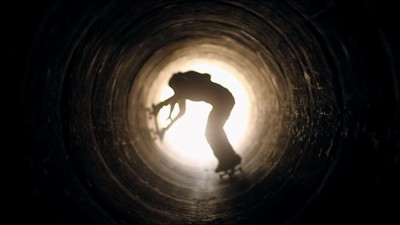
In Bill and Turner Ross's tchoupitoulas, the times are roughly the same, but the lives and the place whose stamp they bear are markedly distinct from those brought to us by Only the Young. The Ross brothers' approach to their film's people -- three African-American siblings, two teenaged boys and their younger brother, from outside New Orleans who, missing their ferry back home, find themselves on an impromptu adventure in the re-burgeoning post-hurricane Big Easy -- is worlds away from, almost the inverse of that seen in Only the Young, where the subjects' personalities are right up close, decidedly in the foreground, against the vivid Southern California backdrop. Tchoupitoulas is more of a sensory experience than that; though both are documentaries, the Rosses reject nearly all narrative or character (save for that of the youngest brother, a charismatic and demonstrative little guy whom we can't help incidentally getting to know as an aspiring musician and insatiably curious thorn in his brothers' sides; it's principally through his wide eyes that we have the film's experience) in flavor of blurring together the boys and the place in a simultaneous love letter to both the city and its people. New Orleans's teeming nightlife, with its buskers, revelers, hookers, and various other performers and participants is the principal character, and so we get a much less specific idea of who the individual human "characters" are than we did in Only the Young. But we get much more direct access to their experiences, and to many others, as well, thanks to the filmmakers' willingness to digress frequently away from the boys' journey and expand upon it, taking us inside jazz joints, strip clubs, and drag bars for a closer look at all the different vibrant, exciting, possibly dangerous elements conjoining to create that aura that draws our three young travelers on through the lively night and into the uncannily still, sobering-up dawn.
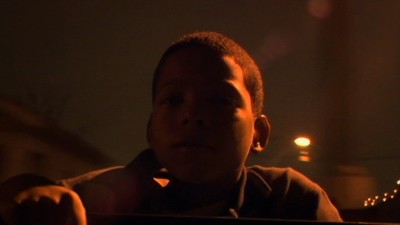
It's that aura that seems to propel the film along, too; the Rosses use a near-constantly mobile camera to let us into the ebullient whirlwind of discovery, possibility, and pure joy that being out all night in the ceaselessly celebratory, lively heart of New Orleans might bring to young residents who would normally be dutifully asleep in their suburban beds, then slow down to wider and more strikingly static compositions to convey the more contemplative mix of melancholy and relief that comes with the quiet, litter-illuminating dawn and the prospect of going back home after all the excitement. tchoupitoulas belongs to a proud lineage of more abstract/avant-garde-minded documentary -- The Man with the Movie Camera, People on Sunday, Vigo's À propos de Nice, Louis Malle's Place de la République -- that use a city as a character that contains transfixing, contrasting multitudes, and though the directors could've hewn closer to their work's core spirit -- the one that led them to, say, downplay the dialogue in the sound mix and let the ambient city sounds take up the slack and set the tone -- by shaving off some unnecessary, more pedestrian character-establishment/plot-driven sections, it does succeed at whisking us along in the whirl of sight, sound, and people unique, in this particular combination, to the city so alive in its bones and so resiliently hungry for more life that Katrina couldn't defeat it.
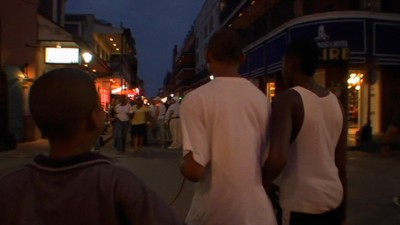
On top of the complementary, tenderly humane and sometimes strikingly beautiful audiovisual journeys on hand, another of the joys of watching these two films as the double feature that their joint inclusion in this set suggests is that it takes the exploratory, empathy-inducing element in each and maximizes it: If most viewers might not until now have seen how urgent, interesting, valuable, and ultimately recognizable are the lives of skateboarding L.A.-area teenagers, how much less likely would we have been to contemplate just what we have in common with the SoCal teens and black Louisianan youth happily stranded in downtown New Orleans for a night, and what we have to learn (or learn to see in new ways) from one another? In their own highly focused, intimate, "small" and handcrafted ways, both Only the Young and tchoupitoulas broaden our conceptions of the world we live in, and the people in it, by letting us know, in a surprisingly meaningful way, people, places, and experiences we might be unlikely ever to have otherwise gotten so close to. These two films stand, together, as a modestly-scaled but exceptionally thoughtful and committed testament to the notion that, in one's ongoing quest to better understand people "different" from oneself, to become a more understanding and aware citizen of the world, few windows grant the privileged potential for deep access to that growth and enlightenment than that provided by the well-wielded lens of a movie camera.
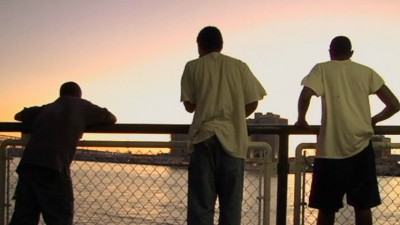
Video:
Both features are presented at an anamorphic widescreen aspect ratio of 1.78:1 in transfers that preserve all of the crisp vividness of their shot-on-HD-digital-video look. Some of the darks in the mostly nighttime-set tchoupitoulas are a bit soft or slightly mottled, but this could just as easily be a limitation of lighting and processing available to the filmmakers as anything to do with the transfer, and otherwise, there are surprisingly few compression artifacts to be seen - no aliasing and only the slightest and most occasional bit of edge enhancement/haloing. Overall, these are nearly top-quality transfers for the standard-definition DVD format.
Sound:Each of the films is presented with Dolby Digital 5.1 surround or 2.0 stereo options, either of which are perfectly good, though the 5.1 will be the preferred choice for those set up for it. The films' dialogue, music, and ambient sounds have been well captured considering their on-the-fly documentary shooting conditions, and mixed for compelling and creative sound designs (especially in tchoupitoulas, whose sound, including the de-centralized speaking of its subjects, is a whirring blur of New Orleans' excitement and peculiar early-morning silences). No distortion or imbalance is present at any point; the one instance of technically limited sound in Only the Young has been covered by the filmmakers with a couple flashes of subtitling.

--Only the Young's extras include an unusually warm, uninhibited feature audio commentary with directors Jason Tippet and Elizabeth Mims (facilitated by film journalist Eric Hynes), in which the filmmakers discuss their behind-the-scenes stories of dealing with their subjects, their own rapport, and their ethical and empathetic approach to documentary-making; Thompson (10 min.), a short by Tippet and Mims that follows the fast friendship of two young Southern Californian high school-age boys from approximately the same milieu as the subjects of Only the Young; about 15 minutes' worth of outtakes featuring various interesting alternate moments that were apparently omitted because they would've re-covered ground already addressed in the final cut; and the film's theatrical trailer.
--Tchoupitoulas's contains the film's theatrical trailer and a short self-produced featurette, Behind the Scenes with the Ross Brothers (15 min.), which offers a glimpse of the fraternal filmmakers at work on filming and promotion, edited together in a kaleidoscopic, intuitive, free-associative style that has much in common with their feature effort.
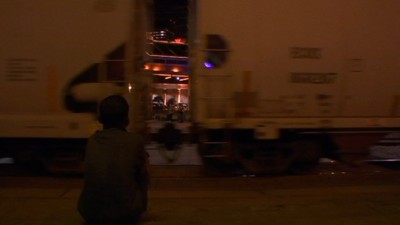
A pair of documentaries about contemporary American youth, made with divergent creative approaches but each as interested in and engaged with its subjects as the other, Only the Young and tchoupitoulas are, at their best, vital snapshots of both their American-millennial human figures and, just as importantly, their particular regions and cultures (Only the Young deals with skateboard kids in exurban Los Angeles, tchoupitoulas with three young African-American brothers from the New Orleans area). Though packaged together due to their very effectively complementary thematic concerns, the films' emphases and styles are very distinct, having been tailored to their subjects with a compelling awareness and sensitivity: Only the Young is what "reality" TV might look like if it were generally more receptive to actually real, messy, ambiguous emotion rather than breathless for trumped-up, grafted-on soap opera; tchoupitoulas is a wide-open sensory rush that harks back to classic "city symphony" films like People on Sunday and À propos de Nice. Each film has its rough spots; Only the Young disperses and wastes some of its power with cliched MTV/advertisement-type stylistics, and tchoupitoulas could be more succinct and potent if it didn't break stride quite so often to coast and meander in aesthetic indecision. But that's probably part and parcel of these young filmmakers' inexperience, without which the films probably wouldn't have their special, fresh flavor, either; a lack of a fully-developed aesthetic or editing-table rigor is a small price to pay for the acute, tangibly real interest these films have in the people and worlds they allow us to glimpse. Each is a document that conveys, with exceptionally committed perceptiveness, the specific bittersweetness(es) of contemporary American coming(s) of age in ways both deeply recognizable to anyone who's ever been a teenager and fascinatingly unique to the young ones whose lives they briefly, tenderly track. Highly Recommended.
|
| Popular Reviews |
| Sponsored Links |
|
|
| Sponsored Links |
|
|
| Release List | Reviews | Shop | Newsletter | Forum | DVD Giveaways | Blu-Ray | Advertise |
|
Copyright 2024 DVDTalk.com All Rights Reserved. Legal Info, Privacy Policy, Terms of Use,
Manage Preferences,
Your Privacy Choices | |||||||













